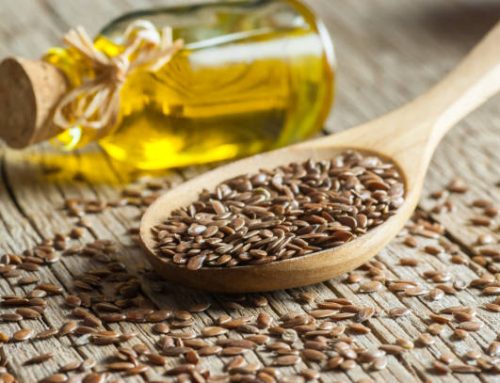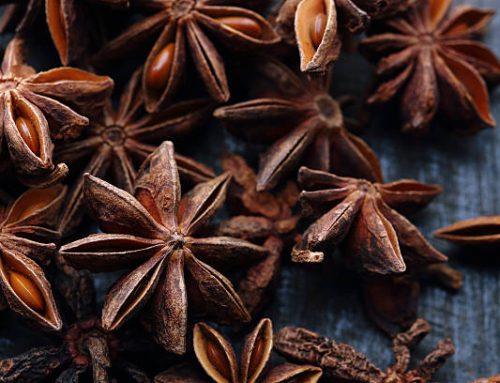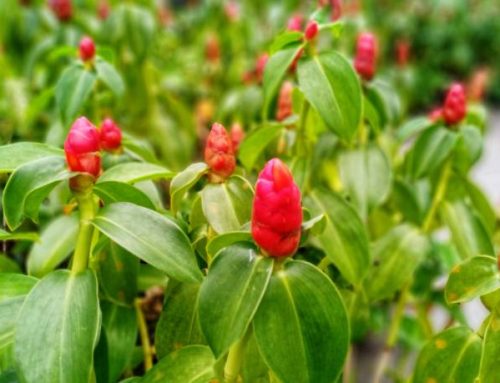In the world of botany, there exists a plant so powerful in its medicinal properties that it has been dubbed the “Broom of the Butcher.” This unassuming shrub, native to the Mediterranean Basin, has long been used as a folk remedy for a wide range of ailments, from respiratory problems to digestive issues. Today, modern scientific studies are confirming what herbalists have known for centuries: the Broom of the Butcher is a botanical wonder with therapeutic benefits worth exploring. In this article, we delve into the fascinating world of this remarkable plant, examining its chemistry and uncovering its secrets for wellness.


kokina flower on white background
1. Broom of the Butcher: The Medicinal Plant You Need to Know
If you haven’t heard of Broom of the Butcher, then it’s time you did. This medicinal plant has been used for centuries, particularly in Europe, where it grows wild in the fields and meadows. This plant, known scientifically as Ruscus aculeatus, is a member of the Lily family and is a close relative of the asparagus plant. Ruscus aculeatus is commonly known as the butcher’s broom because it was once used by butchers to clean their chopping blocks.
But what makes this plant so special? Broom of the Butcher contains a wealth of antioxidants and anti-inflammatory compounds, which have been shown to offer a range of health benefits. Here are some of the reasons why you need to know about this incredible medicinal plant:
- It can help relieve the symptoms of venous insufficiency, a condition that can cause swelling and pain in the legs. Broom of the Butcher is thought to work by improving blood flow and reducing inflammation.
- It may help reduce the appearance of varicose veins by improving circulation and reducing inflammation.
- The anti-inflammatory compounds found in Broom of the Butcher may help alleviate joint pain and stiffness associated with arthritis.
- It has a diuretic effect, which means it can help flush excess fluid from the body. This makes it useful in the treatment of edema (fluid buildup) and high blood pressure.
Broom of the Butcher is typically consumed as a tea or taken in supplement form. It’s important to note that this plant should not be taken by pregnant or breastfeeding women, or by people with high blood pressure or kidney disease. If you’re considering using Broom of the Butcher to treat a medical condition, it’s always a good idea to speak with your healthcare provider first.
In conclusion, Broom of the Butcher is a medicinal plant that has a lot to offer. Whether you’re looking to alleviate the symptoms of venous insufficiency, reduce the appearance of varicose veins, or alleviate joint pain, this plant could be a useful addition to your natural health toolkit. Just remember to use it responsibly and under the guidance of a healthcare provider.
2. Anatomy of the Botanical Wonder: Understanding the Properties of Broom of the Butcher
The Broom of the Butcher is a botanical wonder with unique properties that have been utilized for centuries. This plant, also known as Ruscus aculeatus, belongs to the family Asparagaceae and is native to the Mediterranean region. It is a woody, evergreen shrub that grows up to one meter tall.
The anatomy of Broom of the Butcher is quite distinct. It has glossy, dark green leaves that are strongly flattened to become phylloclades, which are modified stems that function as leaves. The phylloclades are arranged in whorls around the stem and give the plant a very unique appearance. This unique shape of the leaves makes them resistant to desiccation and disease, which is a significant advantage in the arid Mediterranean climate where the plant grows.
Ruscus aculeatus is a dioecious plant, meaning that male and female flowers grow on separate plants. The flowers are small, greenish-yellow, and appear during late winter or early spring. The fruit is a bright red berry that matures in late summer and is a significant source of food for wildlife.
Broom of the Butcher has been used for centuries in traditional medicine. The plant contains several bioactive compounds that have anti-inflammatory and vasoconstrictive properties, making it useful in treating various conditions such as venous insufficiency, hemorrhoids, and varicose veins. The plant also has a diuretic effect and can be used to treat urinary infections.
The unique properties of Broom of the Butcher make it a versatile plant with many potential applications. Ongoing research is focused on identifying new bioactive compounds and further understanding the mechanism of action of the plant. This information could lead to new and more effective treatments for several medical conditions.
3. Unveiling the Therapeutic Benefits of Broom of the Butcher: A Comprehensive Guide
Broom of the Butcher, scientifically known as Raphanus raphanistrum, is a wild plant species that is commonly found in Europe, Asia, and North America. Although it is considered an invasive weed, Broom of the Butcher has been used for medicinal purposes for centuries. This comprehensive guide intends to unveil the therapeutic benefits and uses of this plant in alternative medicine.
1. Antimicrobial Properties
Broom of the Butcher contains various natural antimicrobial properties that can help in fighting against infections. The plant’s ethanolic extract has been demonstrated to have potent activity against a range of pathogenic bacteria, including Escherichia coli, Pseudomonas aeruginosa, and Staphylococcus aureus. Furthermore, the extract can prevent the growth of some fungal infections such as Candida albicans.
2. Antioxidant Effects
Free radicals and oxidative stress are significant contributors to the development of various diseases. Fortunately, Broom of Butcher contains natural antioxidants, including alkaloids, flavonoids, and phenolic compounds that can help neutralize free radicals and reduce oxidative damage. This makes Broom of the Butcher a promising herb to prevent chronic diseases, such as cancer or cardiovascular diseases.
3. Anti-Inflammatory Properties
Chronic inflammation, a widespread issue that arises from a range of diseases, can have a significant impact on one’s health. Research has indicated that Broom of the Butcher can induce anti-inflammatory effects by suppressing the expression and production of pro-inflammatory cytokines. This anti-inflammatory effect can help alleviate the symptoms of inflammatory conditions like rheumatoid arthritis, inflammatory bowel disease, etc.
4. Analgesic Effects
Broom of the Butcher has gained popularity as a natural analgesic that can help manage pain caused by various conditions. The plant’s extract has been shown to have analgesic effects similar to those of aspirin, making it an excellent alternative for people who have allergies or other side effects with chemically synthesized drugs. Additionally, for those who want to avoid opioids, Broom of the Butcher can also provide pain relief without the risk of dependence.
In conclusion, Broom of the Butcher is more than just an invasive weed. With its varied medicinal properties, it has become an integral part of alternative medicine, offering a wide range of benefits that can help enhance one’s overall health and wellness.
4. From Traditional Medicine to Modern Science: The Evolution of Broom of the Butcher in Healing
The Broom of the Butcher, commonly known as Saraca indica or the Ashoka tree, is a medicinal plant used in traditional medicine for centuries. However, with the rise of modern science and advances in pharmaceuticals, the herb has gained new-found popularity as a natural remedy for numerous ailments.
In traditional medicine, Broom of the Butcher has been used to treat various ailments such as bleeding disorders, diarrhea, dysentery, arthritis, and fever. Its various parts such as leaves, bark, and flowers have been used in different forms like decoctions, infusions, and powders. The medicinal properties of this plant have been attributed to the presence of bioactive compounds such as tannins, flavonoids, and glycosides.
In recent years, several studies have been conducted to explore the efficacy of Broom of the Butcher in modern medicine. Research suggests that the plant exhibits anti-inflammatory, antiarthritic, antimicrobial, anticancer, and antidiabetic properties. Furthermore, it has been found to be effective against menstrual irregularities and has been shown to improve the overall reproductive health of women.
Health Benefits of Broom of the Butcher
- Relieves menstrual cramps and regulates menstrual cycle
- Reduces inflammation and pain in arthritis
- Treats diarrhea, dysentery, and other digestive problems
- Boosts immunity and fights against infections
- Lowers blood glucose levels and helps manage diabetes
- Prevents growth of cancer cells
The use of Broom of the Butcher is not free from side effects. The plant contains compounds that can cause gastrointestinal disturbances, headache, and skin rashes. Therefore, it is vital to use the herb under the guidance of a healthcare professional.
In conclusion, the evolution of Broom of the Butcher from traditional medicine to modern science has opened new avenues for research and development of natural remedies. Its potent medicinal properties have earned it the status of a promising herb in modern medicine. However, it is essential to conduct further research and clinical trials to determine its efficacy and safety as an alternative therapy.
5. The Future of Broom of the Butcher: Innovations and Possibilities in Its Medical Application
Broom of the Butcher is a plant that has been linked to many therapeutic benefits. Its scientific name, Ruscus aculeatus, suggests that it may be able to treat various diseases, including constipation, hemorrhoids, and inflammation. Although it has been used in herbal medicine for many years, new evidence suggests that it may have great potential in the medical field.
One of the most exciting possibilities for Broom of the Butcher is its potential application in cancer therapy. Studies have shown that the plant can suppress tumor growth and inhibit the formation of new blood vessels in cancer cells, which can help prevent cancer from spreading. Additionally, Broom of the Butcher has been linked to improved heart function and reduced inflammation, which may be beneficial in treating cardiovascular disease.
In addition, there are many interesting innovations that may arise in its medical application. For example, it may be possible to extract certain compounds from the plant and use them to create new drugs or therapies. Additionally, scientists may be able to modify the plant’s natural properties to improve its efficacy or make it more compatible with other treatments.
The possibilities for Broom of the Butcher are truly exciting, and it is likely that we will see new developments in its use in the coming years. Whether it is used to treat cancer, cardiovascular disease, or other conditions, this plant has the potential to revolutionize modern medicine and offer new hope for patients around the world.
- Broom of the Butcher may offer new treatment options for cancer patients.
- The plant’s potential applications in treating cardiovascular disease are also promising.
- There may be many innovative approaches to using Broom of the Butcher in medicine.
- The future of this plant and its role in medicine is bright.
As we unravel the scientific marvels of the butcher’s broom plant, it is evident that the plant has far-reaching benefits that go beyond its ornamental value. From ancient times to the present day, this botanical wonder has been revered for its medicinal properties, which can aid in the treatment of various ailments. The plant’s therapeutic benefits and unique features are sure to inspire and captivate plant enthusiasts and scientists alike, making it a fascinating topic of research for years to come.
FAQ about Butcher’s Broom
Wondering about the therapeutic benefits of Butcher’s broom or still questioning its effectiveness, here are some questions that might interest you about the plant, with detailed answers.
Q1. What is the scientific name of Butcher’s broom, and where is it typically found?
Answer: Butcher’s broom is a plant with the scientific name Ruscus aculeatus L. It is mostly found in countries around the Mediterranean region and some parts of Africa, Asia, and Europe.
Q2. What parts of Butcher’s broom are used for therapeutic purposes?
Answer: The roots and rhizomes of the Butcher’s broom plant are used for medicinal purposes.
Q3. What are some of the known therapeutic benefits of Butcher’s broom?
Answer: Butcher’s broom is known to have several therapeutic benefits, some of which include helping with hemorrhoids, varicose veins, swelling, and joint-related problems.
Q4. Can Butcher’s broom help treat constipation, and how does it work?
Answer: Yes, Butcher’s broom can aid in the treatment of constipation, which is caused by weakened veins in the lower intestines. The plant’s active ingredients, including ruscogenin and neoruscogenin, can help strengthen these veins, reducing constipation.
Q5. Can Butcher’s broom be consumed in any form, and are there any side effects to its consumption?
Answer: Butcher’s broom is usually consumed in the form of an extract or capsule. Although it is generally safe to consume, some individuals may experience minor side effects, such as gastrointestinal discomfort or allergic reactions. Consult your healthcare provider before consuming any form of Butcher’s broom or other herbal remedies.




